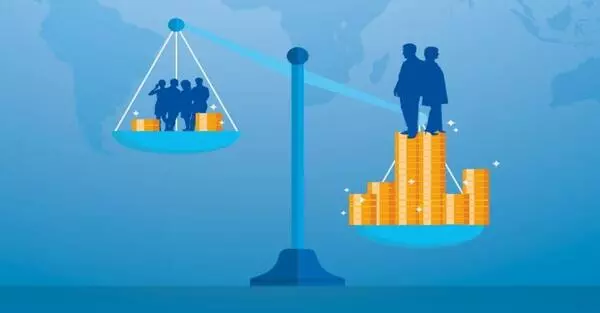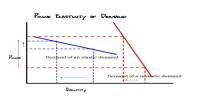Income disparity refers to how income is distributed unequally across a population. The larger the income inequality, the less fair the distribution. Wealth disparity, or the unequal distribution of wealth, is frequently associated with income inequality.
The unequal distribution of income among individuals or households within a society is referred to as income inequality. It is frequently assessed by the Gini coefficient, which ranges from 0 (perfect equality) to 1 (perfect inequality). A tiny percentage of the population obtains a big share of total income in a society with high income disparity, whereas the bulk receives a smaller share.
There are several factors that can contribute to income inequality:
(a) Wage Disparities: Wage disparities between occupations, industries, and skill levels can all contribute to income inequality. High-demand occupations or specialized abilities frequently earn higher pay.
(b) Education and Skill Levels: Higher education and advanced abilities are frequently linked to better-paying professions. Those who have access to high-quality education and training earn more, while those with inadequate education may have fewer options for well-paying professions.
(c) Globalization: Income disparity can be influenced by global commerce and economic integration. While globalization might open up new economic opportunities, it can also cause job displacement in specific industries and locations, potentially increasing income inequality.
(d) Technological Advancements: Technological progress can lead to automation and job displacement in certain sectors. This can result in increased demand for skilled workers in technology-related fields and lower demand for low-skilled labor, contributing to income disparities.
(e) Labor Market Changes: Shifts in the labor market, such as the rise of temporary and gig economy jobs, can impact job security and income stability, leading to disparities in earnings.
(e) Taxation and Social Policies: Government policies, such as tax rates, social welfare programs, and minimum wage laws, can influence income distribution. Policies that favor wealthier individuals or corporations can exacerbate income inequality, while social programs can mitigate it.
(f) Inheritance and Wealth: The intergenerational transfer of wealth can perpetuate income inequality. Individuals born into wealthy families have access to resources, education, and opportunities that can give them a head start in their careers.
Discrimination based on race, gender, or ethnicity can restrict access to opportunities and higher-paying positions, adding to income inequality. Income distribution can be influenced by economic volatility, market demand and supply dynamics, and other market forces. Lower-income people are disproportionately affected by economic downturns.
Income disparity can have serious social, economic, and political consequences. Income inequality can cause social discontent, lower social mobility, and lower overall economic growth. Governments frequently enact strategies to reduce income disparity, such as progressive taxation, social safety nets, school reforms, and workforce development programs.
















